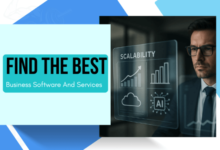Unleashing Cost Savings: The Power of Intelligent Sourcing

Modern procurement departments face mounting pressure to deliver measurable cost reductions whilst maintaining quality standards. Traditional sourcing methods often leave substantial savings untapped, with organisations missing opportunities to optimise their expenditure. Advanced digital tools now offer unprecedented visibility into spending patterns, enabling procurement professionals to identify areas where significant cost reductions can be achieved through strategic sourcing decisions.
The integration of procurement technology solutions has revolutionised how organisations approach supplier selection and contract negotiations. These sophisticated platforms combine artificial intelligence with comprehensive data analytics to reveal hidden cost-saving opportunities that manual processes frequently overlook. Companies implementing intelligent sourcing strategies report substantial improvements in their bottom line, with many achieving double-digit percentage savings across their procurement portfolios through enhanced visibility and control.
Understanding Intelligent Sourcing Fundamentals
Strategic Data Foundation: The cornerstone of intelligent sourcing lies in comprehensive data collection and analysis across all procurement activities. This approach transforms raw spending information into actionable insights that guide strategic decisions. Organisations can identify spending patterns, supplier performance trends, and market opportunities that were previously invisible. The systematic analysis of historical procurement data reveals inefficiencies and highlights areas where alternative sourcing strategies could yield significant savings.
Automated Decision Support: Intelligent sourcing platforms leverage machine learning algorithms to evaluate supplier proposals and market conditions automatically. These systems process vast amounts of information in seconds, comparing pricing structures, delivery capabilities, and quality metrics across multiple suppliers. The automated analysis eliminates human bias from initial supplier evaluations while ensuring that decision-makers have comprehensive information to support their final selections.
Risk Assessment Integration: Modern sourcing solutions incorporate sophisticated risk assessment tools that evaluate potential suppliers across multiple dimensions, including financial stability, operational capability, and regulatory compliance. This comprehensive evaluation ensures that cost savings don’t come at the expense of supply chain reliability. The integration of risk metrics into sourcing decisions helps organisations balance cost optimisation with operational security.
Advanced Analytics Driving Cost Optimisation
Spend Pattern Recognition: Advanced analytics engines examine procurement data to identify unusual spending patterns and highlight opportunities for consolidation or renegotiation. These systems can detect when similar products or services are being purchased from multiple suppliers at varying price points. The analysis reveals opportunities to leverage volume discounts or negotiate better terms through strategic supplier consolidation without compromising quality or service levels.
Market Intelligence Integration: Intelligent sourcing platforms incorporate real-time market data to ensure procurement decisions are based on current market conditions rather than historical assumptions. This integration allows procurement teams to time their sourcing activities to take advantage of favourable market conditions. The platforms monitor commodity prices, supplier capacity, and competitive dynamics to recommend optimal timing for contract renewals or new supplier engagements.
Predictive Cost Modelling: Sophisticated forecasting models analyse historical trends and market indicators to predict future cost trajectories for key procurement categories. These predictions enable procurement teams to make strategic decisions about contract timing and duration. Organisations can lock in favourable pricing when market conditions are advantageous or implement flexible contract structures when price volatility is expected.
Automation Features Enhancing Procurement Efficiency
Dynamic Bidding Processes: Automated bidding systems enable organisations to conduct complex procurement events with minimal manual intervention whilst maintaining competitive pressure among suppliers. These platforms can manage multiple bidding rounds, automatically evaluate responses against predetermined criteria, and facilitate real-time negotiations. The automation reduces the administrative burden on procurement teams whilst ensuring that competitive dynamics drive optimal pricing outcomes.
Flexible Proposal Evaluation: Modern sourcing platforms accommodate various supplier response formats and automatically normalise proposals for fair comparison. The systems can handle complex bidding scenarios where suppliers offer alternative solutions or value-added services. This flexibility ensures that innovative supplier proposals receive proper consideration whilst maintaining objective evaluation criteria across all responses.
The automation of routine procurement tasks allows professional staff to focus on strategic activities such as:
- Supplier relationship management and performance optimisation
- Category strategy development and market analysis
- Contract negotiation and risk management
- Innovation partnerships and supplier development programmes
- Compliance monitoring and regulatory adherence
Comprehensive Spend Analysis Capabilities
Multi-Dimensional Data Views: Advanced spend analysis tools provide procurement professionals with multiple perspectives on organisational expenditure patterns through sophisticated dashboard interfaces. These platforms can segment spending data by category, supplier, department, geography, or any combination of relevant dimensions. The multi-dimensional analysis reveals hidden relationships between different spending categories and identifies opportunities for strategic sourcing initiatives that might not be apparent through traditional reporting methods.
Exception Reporting Systems: Intelligent monitoring systems continuously scan procurement data to identify unusual transactions or spending patterns that deviate from established norms. These automated alerts help procurement teams quickly identify potential compliance issues, maverick spending, or opportunities for immediate cost savings. The exception reporting capabilities ensure that organisations can respond quickly to emerging issues before they become significant problems.
Benchmark Comparison Tools: Sophisticated benchmarking capabilities allow organisations to compare their procurement performance against industry standards and best practices. These tools incorporate external market data to provide context for internal spending patterns and supplier performance metrics. The benchmarking analysis helps procurement teams identify areas where their organisation is achieving superior results and areas where improvement opportunities exist.
Data-Driven Decision Making Advantages
Enhanced Negotiation Positioning: Access to comprehensive market intelligence and supplier performance data significantly strengthens procurement teams’ negotiation positioning during contract discussions. The detailed analysis provides concrete evidence to support negotiation strategies and helps identify areas where suppliers may have flexibility in their pricing or terms. This data-driven approach often results in more favourable contract terms and improved supplier relationships through transparent, fact-based discussions.
Strategic Supplier Relationship Management: Intelligent sourcing platforms provide detailed insights into supplier performance across multiple dimensions including cost, quality, delivery, and innovation contributions. This comprehensive view enables procurement teams to develop more strategic relationships with key suppliers based on objective performance data. The analysis helps identify suppliers who consistently deliver exceptional value and those who may need additional support or development to meet expectations.
Long-term Cost Planning: The integration of predictive analytics and market intelligence enables organisations to develop more accurate long-term cost projections for strategic planning purposes. These projections consider market trends, supplier capacity constraints, and regulatory changes that could impact future procurement costs. The enhanced planning capability allows organisations to make more informed decisions about capital investments, product development, and market expansion strategies.
Implementation Strategies for Maximum Impact
Phased Deployment Approach: Successful implementation of intelligent sourcing solutions typically follows a phased approach that begins with high-impact procurement categories before expanding to the broader organisation. This strategy allows procurement teams to demonstrate value quickly whilst building internal expertise and confidence in the new systems. The phased approach also enables organisations to refine their processes and address any challenges before full-scale deployment.
Change Management Integration: The transition to intelligent sourcing requires careful attention to change management principles to ensure user adoption and process compliance. Training programmes should focus on demonstrating how the new tools enhance rather than replace professional expertise. Success depends on procurement professionals understanding how to interpret and act upon the insights provided by intelligent sourcing platforms.
Performance Measurement Framework: Establishing clear metrics for measuring the success of intelligent sourcing initiatives ensures that organisations can track their return on investment and identify areas for continuous improvement. These metrics should include both hard savings achieved through better pricing and soft benefits such as reduced processing time and improved supplier relationships.
Overcoming Common Implementation Challenges
Data Quality Foundation: The effectiveness of intelligent sourcing solutions depends heavily on the quality and completeness of underlying procurement data. Organisations must invest in data cleansing and standardisation processes before expecting optimal results from advanced analytics. This preparation phase often reveals inconsistencies in procurement processes that need to be addressed to maximise the value of intelligent sourcing investments.
User Adoption Strategies: Procurement professionals may initially be sceptical of automated systems that appear to challenge their expertise and decision-making authority. Successful implementations focus on demonstrating how intelligent sourcing tools enhance professional capabilities rather than replacing human judgment. Training programmes should emphasise the strategic value that professionals bring to interpreting and acting upon system recommendations.
Integration Complexity Management: Modern organisations often have complex technology environments that can make integration of new sourcing platforms challenging. Careful planning and phased implementation approaches help manage this complexity whilst ensuring that intelligent sourcing solutions can access the data they need to provide valuable insights. The integration process should prioritise critical data sources first before expanding to include additional systems.
Conclusion
Intelligent sourcing represents a fundamental shift in how organisations approach procurement cost optimisation, moving beyond traditional manual processes to leverage advanced analytics and automation for superior results. The combination of comprehensive spend analysis, automated bidding processes, and data-driven decision support enables procurement teams to uncover savings opportunities that would otherwise remain hidden.
Organisations that embrace these technologies position themselves to achieve sustainable competitive advantages through more effective cost management and supplier relationship strategies. Take the first step towards transforming your procurement operations by evaluating how intelligent sourcing solutions could enhance your organisation’s cost-saving capabilities and strategic procurement outcomes.





